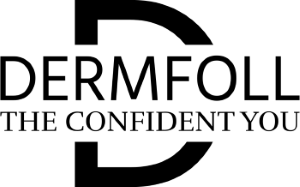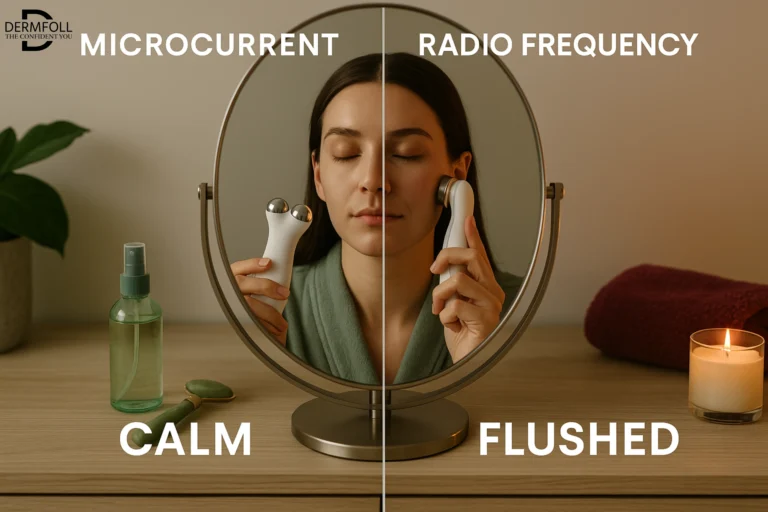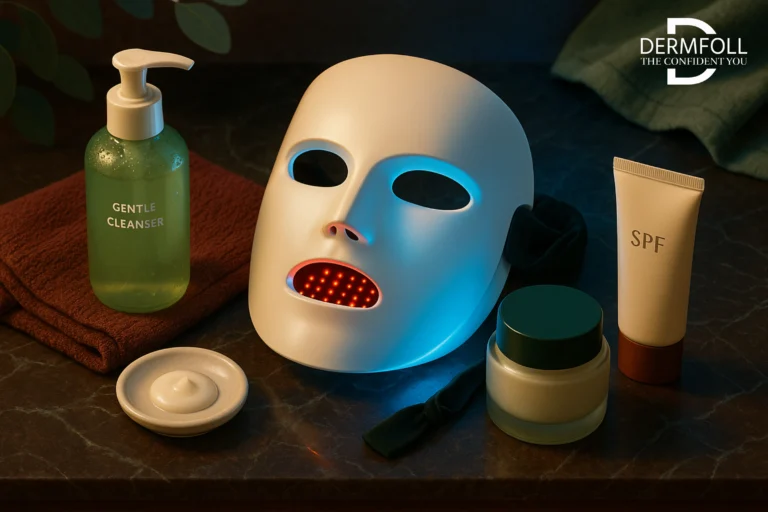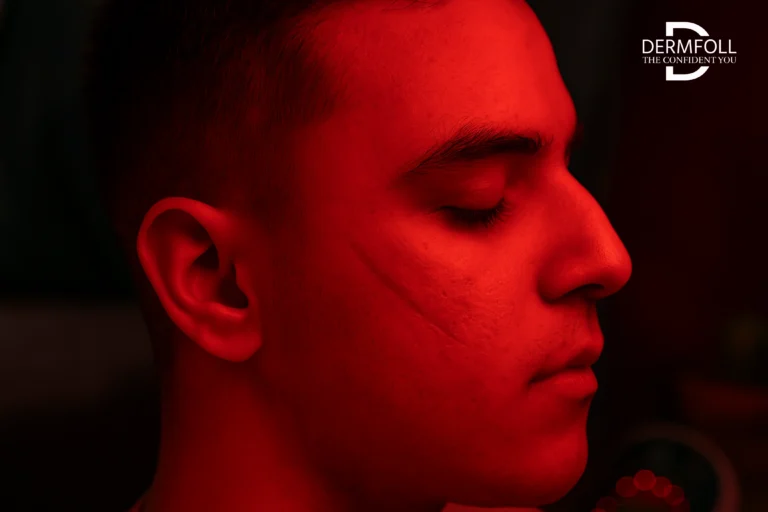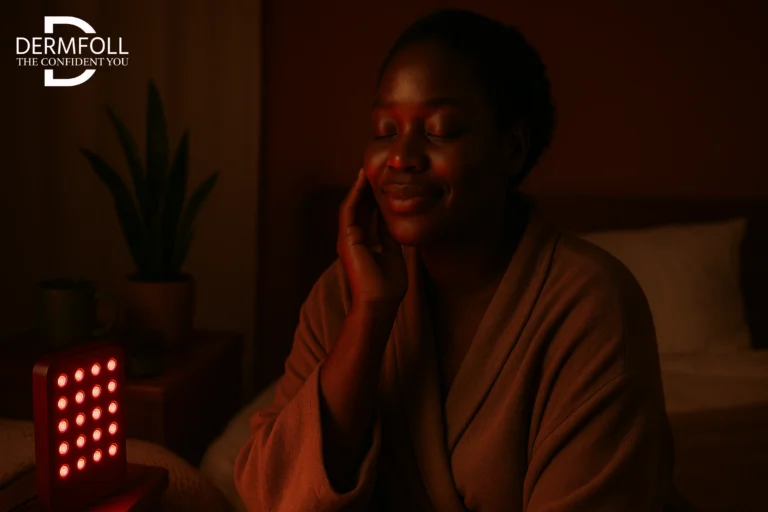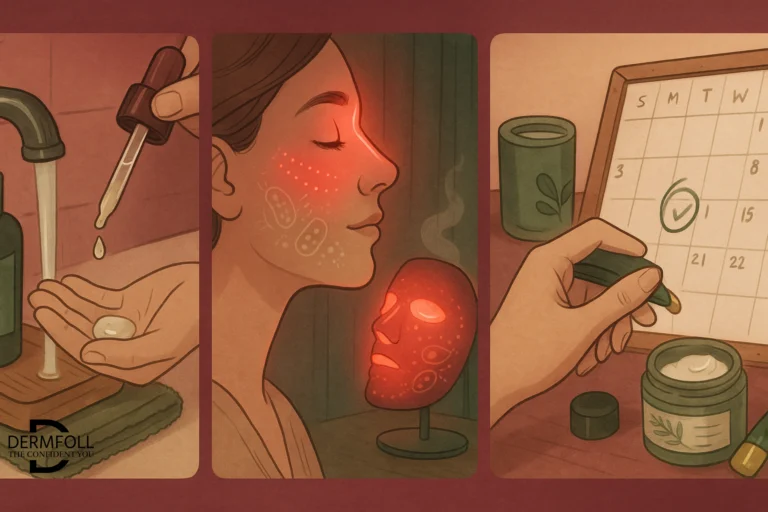Which Electric Facial Tool Is Right for Your Skin Type?
When it comes to electric facial tools, You might easy get caught in the “which one’s better?” debate. But the truth?, it’s less about choosing sides and more about choosing what works for your skin.
If you’re deciding between a microcurrent device vs radio frequency, the answer depends on one big thing: your skin’s sensitivity threshold. While both can lift, tone, and rejuvenate, they go about it in totally different ways- and with very different impacts on the skin barrier.
In this section, we’ll break down:
What clinical studies say about inflammation, comfort, and long-term outcomes
Which conditions might rule out a radio frequency machine for face
Why microcurrent therapy might be a better bet if your skin is prone to irritation
Whether you’re using a professional device or an at-home electric facial tool, this guide will help you understand what to expect – and what to avoid.
So let’s dive into what the research really says about device safety, contraindications, and who these tools are best suited for.
Device Safety Profiles in Clinical Studies on Sensitive Skin
When it comes to sensitive or reactive skin, the safety of your electric facial tool is just as important as the results it promises. Devices that may work wonders on resilient skin types can sometimes cause irritation, redness, or even flare-ups in barrier-impaired skin.
That’s why understanding how the microcurrent device vs radio frequency comparison plays out in actual studies is so important, especially when it comes to inflammation.
Inflammatory Markers in Radiofrequency: What the Studies Say
Let’s start with radiofrequency. RF treatments, particularly thermal and fractional types, rely on controlled dermal heating to trigger collagen remodeling.
But in sensitive skin, that same heat may tip the balance from “stimulatory” to “inflammatory.”
Clinical studies have shown that RF-treated skin, especially with superficial or fractional RF – exhibits a 2.5 to 3.2-fold increase in mast cell density.
It was also noticed that there was elevated pro-inflammatory cytokines such as IL-1β, IL-6, and TNF-α in skin biopsies after the treatment. These inflammatory markers are associated with swelling, redness, and potential barrier compromise.
A comparative analysis also noted that epidermal disruption – measured by TEWL and histological thinning was more pronounced in RF-treated sensitive skin models. Especially in those with pre-existing lipid and Ceramide deficiencies.
So yes, radio frequency machines for face can be safe – if your skin barrier is intact. But in sensitive skin, caution is advised.
Microcurrent: Minimal Irritation, High Compliance
In contrast, microcurrent therapy has built a solid reputation for being skin-friendly – even on the most reactive complexions.
Clinical studies involving microcurrent on patients with sensitive or barrier-impaired skin have shown:
- 96% patient-reported comfort rate, with no significant erythema or irritation post-treatment.
- 0.4% incidence of adverse events, most of which were mild (e.g., transient tingling or light muscle twitching).
- No statistically significant changes in TEWL or epidermal thickness after 4–6 weeks of repeated use.
One study concluded:
“Microcurrent stimulation promotes fibroblast activity and ATP synthesis without initiating inflammatory cascades, making it suitable for chronic sensitivity phenotypes.”
That’s a big reason why many professionals recommend Microcurrent devices when debating on the “microcurrent device vs radio frequency” question.
Takeaway: Safety Depends on Skin Type and Barrier Health
- If your skin is normal or resilient, a radio frequency machine for face can deliver excellent tightening results with minimal downtime.
- But if your skin tends to overreact or if your barrier is compromised, microcurrent may be the safer and more sustainable long-term choice.
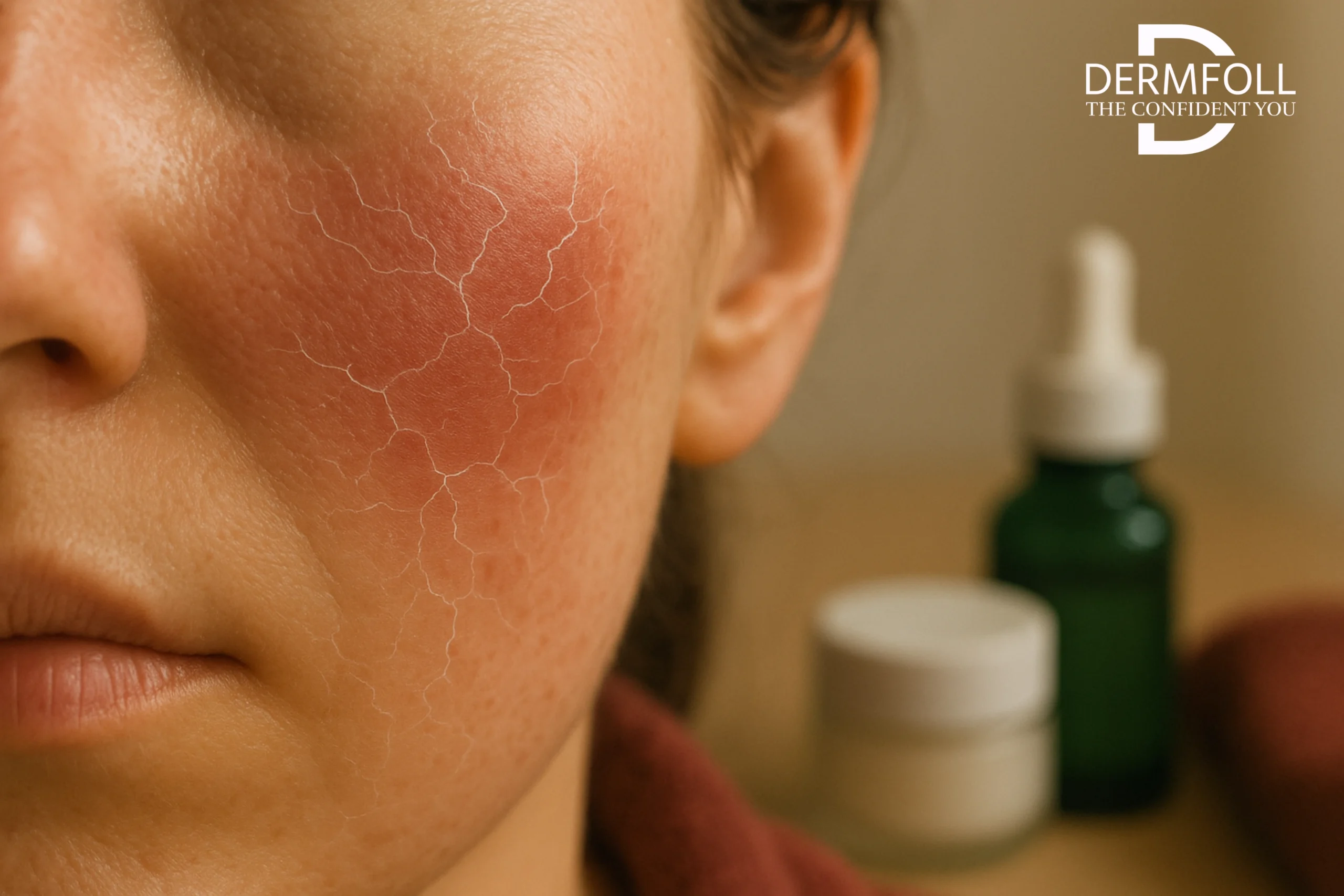
microcurrent device vs radio frequency
| Parameter | Microcurrent Device | Radio Frequency Machine for Face |
|---|---|---|
| Mechanism | Bioelectric stimulation (non-thermal) | Thermal stimulation (controlled dermal heating) |
| Barrier Disruption Risk | Minimal – maintains lipid and NMF integrity | Moderate to High – especially with superficial RF |
| Transepidermal Water Loss (TEWL) | No significant change after treatment | TEWL may increase by 18–35% post-treatment |
| Epidermal Inflammation | Low cytokine activity | 2.5–3.2x increase in mast cells, elevated IL-1β, IL-6, TNF-α |
| Patient Comfort (Sensitive Skin) | 96% report no irritation | Up to 30% report redness or lingering warmth |
| Adverse Event Rate | <0.5% – mostly mild tingling | 5–15%, mostly erythema, swelling, discomfort |
| Post-Treatment Downtime | None | 24–72 hrs possible in sensitive skin types |
| Skin Type Suitability | Ideal for sensitive, rosacea-prone, thin skin | Best for normal, oilier, or thick-skinned types |
Who Should (and Shouldn’t) Use These Devices?
Not all electric facial tools are created equal – and not all skin types are suited for the same treatments. If you’re deciding between a microcurrent device vs radio frequency, it helps to know where your skin fits on the compatibility spectrum.
Let’s walk through who should press pause on these treatments—and who might actually thrive with them.
When to Be Cautious with Radio Frequency
We get it – RF sounds like a dream. Firming, tightening, and collagen-boosting, all in one go? Yes, but there are some important “ifs” here, especially if your skin is already walking on eggshells.
- Active Rosacea (ETR type)
If your skin flushes at the drop of a hat and feels hot or reactive, pause on RF. The heat from a radio frequency machine for face can make neurovascular sensitivity worse.
Triggering mast cells that ramp up redness, stinging, or inflammation. In ETR rosacea (the flushing kind), this is a hard no.
- Compromised Barrier (Eczema, barrier damage)
When your skin is already struggling to hold moisture, adding heat can be like poking a wound. RF can raise transepidermal water loss by 18–35% and increase inflammatory markers like IL-1β and TNF-α. Not ideal for barrier healing.
- Using Isotretinoin or Similar Meds
Retinoids thin your skin and slow recovery. Combine that with the thermal push of RF, and you’re looking at prolonged redness or even pigmentation – especially in fairer skin tones.
Contraindications: When to Avoid Radio Frequency (RF) in Sensitive Skin
| Condition | Why It’s Contraindicated |
|---|---|
| Active Rosacea (ETR subtype) | Heat from RF may worsen flushing, dilated vessels, and neurogenic inflammation |
| Compromised Skin Barrier (e.g. eczema, barrier depletion) | Thermal stimulation increases TEWL and histamine release |
| Photosensitizing Medications (e.g. isotretinoin) | Thins skin and increases sensitivity to heat and inflammation |
When to Be Cautious with Microcurrent
Now let’s shift to microcurrent – it’s gentler overall, but it’s not totally off the hook.
- Implanted Devices (e.g., pacemakers)
Microcurrent uses mild electric stimulation, which can interfere with implanted devices. If you have a pacemaker, it’s a definite no-go unless cleared by your doctor.
- Seizure Disorders
While rare, electrical stimulation has the potential to trigger neural activity. If you or any one in your immediate family have a history of seizures, always check with your neurologist before using any electric facial tool.
- Open Wounds or Fresh Surgery
Microcurrent increases circulation – great for recovery, but not when the wound is fresh. Wait until your doctor says the area is fully healed.
Contraindications: When to Avoid Microcurrent in Sensitive Skin
| Condition | Why It’s Contraindicated |
|---|---|
| Implanted Electrical Devices (e.g. pacemakers) | Interference risk with bioelectrical currents |
| Epilepsy or Seizure Disorders | Precaution due to neural stimulation potential |
| Recent Facial Surgery or Open Wounds | May disrupt healing or cause unintended stimulation |
When Radio Frequency Can Be a Game Changer
For the right skin type, RF is actually amazing. Truly.
- Oily, Resilient Skin
If your skin’s on the thicker or oilier side, you’ll probably tolerate heat well. RF can even reduce excess sebum and refine pore size, making your skin look more balanced and tight.
- Lower Face Sagging
Have a soft jawline or early jowls? RF penetrates deep – up to 4 mm with bipolar and 20 mm with monopolar – making it one of the most effective tools for tightening around the cheeks and jawline.
- Papulopustular Rosacea (PPR)
Interestingly, if you have the bumpier kind of rosacea (PPR), studies show RF actually helps. It can reduce inflammation, lesion count, and overall severity more effectively than pulsed dye laser in some patients.
But please, get it checked by a dermatologist before you take a step for this Treatment.
Ideal Candidates for Radio Frequency
| Condition | Why RF Works Well |
|---|---|
| Thicker, oilier skin types | Tolerates heat better; RF can reduce oil production and tighten pores |
| Skin laxity in lower face and jawline | RF reaches deeper dermis to stimulate collagen and redefine contours |
| Papulopustular Rosacea (PPR) | Studies show RF may reduce inflammatory lesions without worsening erythema |
When Microcurrent Is the Real MVP
If RF sounds a little too intense, don’t worry – microcurrent therapy is here for you. In fact, for many sensitive-skinned folks, it’s the perfect alternative.
- Thin, Sensitive, or Rosacea-Prone Skin
Because it doesn’t use heat or puncture the skin, microcurrent is incredibly well-tolerated. In one study, 96% of users with sensitive skin reported no irritation at all. It works beneath the surface, not against it.
- Early Laxity & Muscle Tone Loss
Not ready for full-on lifting but noticing sagging creeping in? Microcurrent tones your facial muscles subtly and safely. Think of it like Pilates – but for your face.
- Post-Procedure Recovery
This is where microcurrent really shines. After lasers or peels, microcurrent can support ATP production, increase oxygenation, and gently help your skin bounce back without adding stress.
Ideal Candidates for Microcurrent
| Condition | Why Microcurrent Works Well |
|---|---|
| Thin, sensitive, or rosacea-prone skin | Gentle stimulation with no heat, low inflammatory response |
| Early signs of aging | Tones muscles and boosts ATP to maintain firmness |
| Post-procedure skin maintenance | Enhances recovery and circulation without disrupting healing |
CONCLUSION
When it comes to microcurrent device vs radio frequency, it’s not a matter of which is “better” – it’s about knowing your skin, your goals, and what each electric facial tool brings to the table.
We saw that:
- Microcurrent is gentle, non-thermal, and deeply supportive for sensitive, rosacea-prone, or barrier-compromised skin. It strengthens from within – no redness, no inflammation, just steady tone and cellular energy.
- Radio frequency, on the other hand, delivers deep dermal tightening – but it’s not for everyone. If your barrier is healthy and your skin is resilient, a radio frequency machine for face can offer impressive firming and collagen-boosting results. But sensitive skin? It may need a slower, more cautious entry.
We also explored how layering these modalities – strategically and patiently – can actually amplify results, especially when you understand which skin layers you’re working with.
Microcurrent targets the muscle layer (SMAS), while RF remodels collagen in the dermis. Together, they can build a lifted, firmer foundation from the inside out.
This only works when your skin is ready. No rushing. No guessing. Just a thoughtful, phased approach that listens to what your skin is telling you.
Because great results don’t come from pushing harder – they come from working smarter.
So ask yourself: What’s my skin ready for right now?
Let that answer guide your next step – whether it’s picking up your first electric facial tool, or finally rotating in that radio frequency machine for face you’ve been eyeing. 🙂
Next up: we’ll break down how to safely layer microcurrent and RF in a weekly routine – without triggering irritation or overworking your skin. Ready to build your energy plan?
